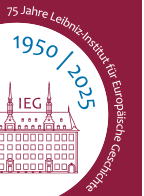Marginalization through historiography. Emergence, development and reception of the historiographical category "Orthodoxy"
Who is considered "orthodox" in the history of Christianity, when and why? More precisely: What is considered "orthodoxy" in Protestant historiography related to the early modern period, when and why? Christian Witt pursued these core questions with his Heisenberg project. In doing so, he was able to incorporate observations that in Anglo-American research go by the name of "Construction of Orthodoxy." To summarize: "Orthodoxy" is not set from the beginning as a supra-temporal fact, but is a construct in the history of religion, which functions as a phenomenon of demarcation and marginalization. Thus, the reclamation of orthodoxy belongs, in the history of religion, to the comprehensive discursive processes of discernment, in the course of which a certain direction seeks to assert itself by excluding or marginalizing other currents. As a basis of legitimation for this process of assertion and for its successful course, one's own point of view is called orthodox. Christian Witt was specifically interested in the construction of the historiographical category "orthodoxy" in the context of German Protestant church historiography from the late 17th to the early 20th century, against the background of pluralization processes within Protestant theology history.Remarkably enough, in the 18th century famous German theologians and church historians as representatives of historic-critical thinking do not take up Arnold’s pejorative understanding of »Orthodoxy« and his categorical reshaping. Instead, they reveal the constructivist logic behind the claim and the historiographical use of the category and try to establish other concepts to describe processes of pluralization within the history of early modern Protestantism. To examine that history of the historiographical concept »Orthodoxy« Christian Witt combined the approaches assembled under the headline »Construction of Orthodoxy« with two ideas Reinhart Koselleck developed in the broader context of his famous »Begriffsgeschichte«, namely the ideas of »Semantische Kämpfe« and of »Asymmetrische Gegenbegriffe«. Assuming that »Orthodoxy« is the result of extensive and complex processes of construction aiming to legitimate specific religious phenomena, institutions, or teachings and to oppose deviate movements at once, Kosellecks approaches of »Semantische Kämpfe« and of »Asymmetrische Gegenbegriffe« can help to operationalize the assumption that »Orthodoxy« is constructed on the level of a History of Concepts.


